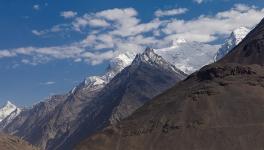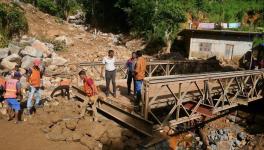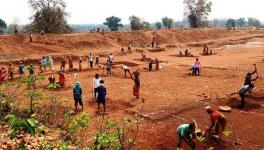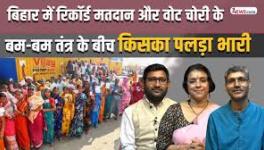Justice Bulldozed! A Weapon of Exclusion of Poor
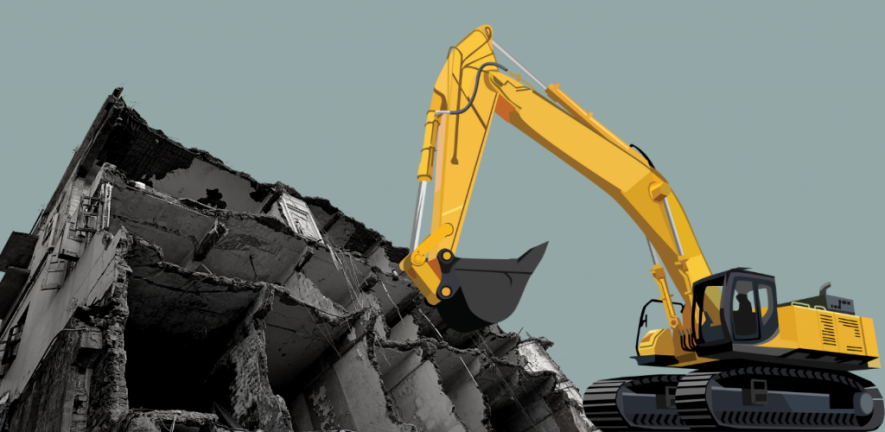
Representational Image.
The bulldozer has become a political symbol of punishment, majoritarian dominance, and performative governance. From Assam’s eviction of climate refugees to Delhi’s slum demolitions and the G20 beautification drive, to Haryana’s trample and from Uttar Pradesh to Madhya Pradesh where bulldozers function as collective punishment, the pattern is clear: redistribution has been redefined as a machinery of exclusion. Across states, the rhetoric of clearing encroachments and restoring rightful ownership has become a cover for dispossession, where bulldozers erase homes, schools, and shops of the poor while sparing elite violators.
Consider Assam. In Goalpara district, a fact-finding team documented a series of eviction drives in Haseela Beel, Ashudubi village, and Rakhyasini in June–August 2025. In just two months, more than 1,700 families were rendered homeless. These were not undocumented encroachers. Families possessed land deeds dating back to the 1960s, entries in the 1951 NRC (National Register of Citizens), voter lists from the 1970s, and schools and anganwadis built by the state itself. Many were climate refugees who had settled here decades ago after their villages were lost to riverbank erosion, a common disaster in Assam.
At Haseela Beel, residents were given just 48 hours to vacate. At Ashudubi, demolitions were followed by police firing on July 17, in which a 19-year-old was killed. In Rakhyasini, shops were demolished despite a High Court stay order. The government justified these drives as protecting indigenous land and wetlands. In practice, it left families under tarpaulin sheets during the monsoon, without food, water, or healthcare. This was not redistribution from rich to poor, it was dispossession of the poor for the state’s control over land.
Delhi has been no different. Ahead of the G20 Summit in 2023, the city was “beautified.” The poor were made invisible by demolishing settlements, fencing off slums, and displacing street vendors so that visiting dignitaries would see only Delhi’s “world-class” facade.
According to the Housing and Land Rights Network (HLRN), Delhi alone witnessed 2.78 lakh people evicted in 2022–23, the highest of any state. Families with ration cards, Aadhaar IDs, and decades of residence were reduced to rubble overnight. Schools and anganwadis were bulldozed. The poor bore the cost of Delhi’s global image project.
While Assam and Delhi reveal bureaucratic violence, Uttar Pradesh and Madhya Pradesh show bulldozers deployed as collective punishment. In UP, following communal clashes in Kanpur and Prayagraj, homes and shops of Muslims were demolished on grounds of “illegality.” No notices, no hearings, no court orders. The Chief Minister’s supporters celebrated this as “bulldozer justice”, an inversion of constitutional governance into majoritarian revenge.
In Madhya Pradesh’s Khargone (2022), after communal violence, bulldozers flattened Muslim homes within 24 hours. Here too, the rhetoric was encroachment, but the pattern of targeting revealed the communal subtext. In both states, bulldozing is not about redistribution or legality. It is about disciplining minorities and the poor, making their rights contingent on political obedience.
Supreme Court’s Directives and Their Breach
In November 2024, the Supreme Court laid down strict safeguards, stating clearly, no demolition without a show-cause notice, giving at least 15 days to the victim to respond, court hearings before action making exceptions only where structures posed immediate danger. Yet, across states, these directives are being openly flouted.
Families in Assam were evicted even with High Court cases pending. In Delhi, notices were issued after demolitions, turning due process into a farce. In UP and MP, the bulldozer has been used within 24 hours of communal clashes, bypassing all procedure. This disregard for the Supreme Court is not accidental, it signals an executive project where bulldozer politics itself is above the law.
The Myth of Redistribution
The language of redistribution is being weaponised. Assam’s Chief Minister claims to be protecting indigenous land. In Delhi, demolitions are framed as necessary for railways, highways, or world-class infrastructure. In UP and MP, bulldozers are portrayed as cleansing encroachment to restore order.
Redistribution in its true sense means land to the landless, housing to the homeless, and resources to the marginalised. Instead, it has been inverted into eviction of the poor for expressways, industrial corridors, gated colonies, and speculative real estate.
The irony is glaring, street vendors and slum dwellers are branded encroachers, while corporate land grabs, illegal farmhouses, and elite encroachments go untouched.
Redistribution has become a euphemism for State-enabled transfer of land upward, from the poor to the rich. Behind every figure lies shattered lives. In Assam, schools, mosques, and anganwadis were destroyed. Families now shelter under plastic sheets in flood-prone areas. In Delhi, workers lost not just homes but their proximity to work, forcing them to migrate further out. In UP and MP, women and children were left in makeshift camps, stripped of dignity and security.
Evictions during the monsoon or peak summer expose families to extreme weather, disease, and hunger. Children lose entire years of education. Relief, when it comes, is from neighbours and charities, not the state that displaced them.
More importantly, the pain of these demolitions is not borne equally. The differential impact falls most heavily on the already marginalised; Muslims, Dalits, adivasis, migrants, and women. These groups lack both the political capital and financial resources to resist or seek redress, making them disproportionately vulnerable to the bulldozer. For a poor family, the demolition of a single room can mean the collapse of an entire livelihood, while wealthier violators of land laws are shielded by legal remedies and political influence.
The intersectionality of poverty with other axes of exclusion like caste, religion, gender, and migrant status, further deepens the injustice. Muslim neighbourhoods are often selectively targeted, reinforcing communal prejudice. Dalit and adivasi communities, historically denied secure land titles, are rendered “illegal” on their own soil.
Women suffer acutely: eviction means the loss of safe domestic space, childcare centres, and sanitation facilities, compounding the risks of violence and insecurity. Migrant workers, cut off from affordable housing near their jobs, are pushed to city peripheries where both employment and public services are harder to access.
These overlapping vulnerabilities show that bulldozer politics is not just about structures of brick and mortar. It is about reinforcing hierarchies of power and deepening the insecurities of those already at the margins. International human rights standards underline this very imbalance.
What unites these cases of pain and deprivation is the transformation of the bulldozer into political theatre. For middle-class and upper-caste constituencies, demolitions look like performative governance, the State taking action against illegality. For ruling parties, bulldozers showcase decisive authority and feed electoral campaigns.
But this spectacle hides a darker truth: bulldozers deepen inequality, strip the poor of constitutional protections, and entrench majoritarian politics. For minorities and the poor, the bulldozer has become a symbol of fear, a constant reminder that their homes can be erased in hours.
Towards Genuine Land Justice
Land redistribution in its true form must confront structural inequalities rather than deepen them. Justice requires:
- Land to the landless: addressing structural inequality where a small elite controls vast tracts.
- Rehabilitation before removal: no eviction without alternative housing, as the Supreme Court itself has directed.
- Recognition of climate refugees: especially in Assam, where displacement is a survival strategy, not a crime.
- End to collective punishment: demolitions cannot be used as retribution for communal clashes or political dissent.
Civil society has repeatedly called for a moratorium on forced evictions, independent probes into rights violations, and a national monitoring mechanism to ensure compliance with due process. Until these steps are taken, the very idea of redistribution will remain hollow.
What was once projected as a promise of equity has been turned on its head, functioning instead as a tool of dispossession. Today’s bulldozer politics lays bare the true face of India’s land regime: not the empowerment of the marginalised, but their erasure, punishing the poor while insulating the powerful.
And this conflict will only sharpen. As India urbanises further, and as climate change displaces millions from riverbanks, coastlines, and drought-hit regions, the demand for land will intensify. The choice before the state is clear: to persist with bulldozers and dispossession, or to build a genuinely inclusive framework of redistribution that secures housing, dignity, and justice for those at the margins. The direction taken will determine whether the politics of land continues as an instrument of exclusion, or is reclaimed as a foundation for democracy and equality.
Shirin Akhter is Associate Professor at Zakir Husain Delhi College, University of Delhi. The views are personal.
Get the latest reports & analysis with people's perspective on Protests, movements & deep analytical videos, discussions of the current affairs in your Telegram app. Subscribe to NewsClick's Telegram channel & get Real-Time updates on stories, as they get published on our website.












